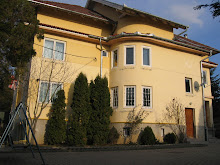
The town was first documented as ‘Novum Forum Sicolorum' (The New Market of the Seklars) in 1322. Beginning with the 16th century, Targu Mures excels as an important cultural and education centre. The first school appears in 1492. In 1786, the first printing shop is established and in 1802 count Teleki Samuel, chancellor of Transylvania, lays the foundations of the documentary library that bears his name to this day. The city received a major boost to its social and economic life in 1754 when it became the seat of the supreme court of justice of the Principality of Transylvania.
During medieval times, guilds, made up of groups of craftsmen, played an important role in the evolution of the town. Artisan guilds had their privileges recognized since 1493. In 1620, members of the guilds took part in the building of the town fortress. Two of the most important guilds were the shoemakers and tanners ones. In 1800, the shoemakers’ guild had the most members, namely 254. The guild system lasted until 1872.
Targu Mures became a modern town in the second half of the 19th century, along with the expansion of the railway line. Today its centrally located Piata Trandafirilor (Roses Square) is lined with modern streetside cafes and restaurants, churches, and monuments. Targu Mures' top attraction is located at the south end of the square: the Culture Palace (Palatul Culturii), a flamboyant early 20th-century city hall with an outstanding stained-glass hall, housing some of main local museums.






Who wouldn't want to live in Targu Mures? :)
ReplyDelete